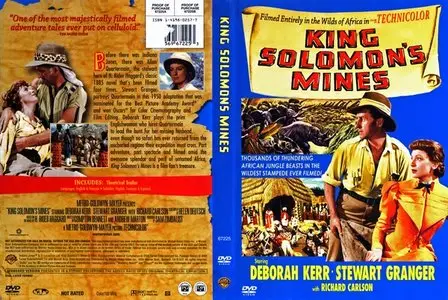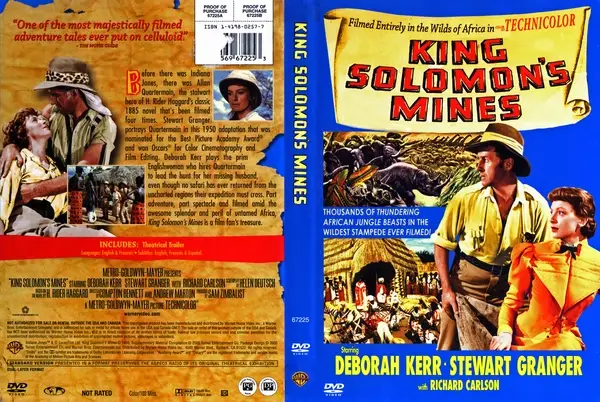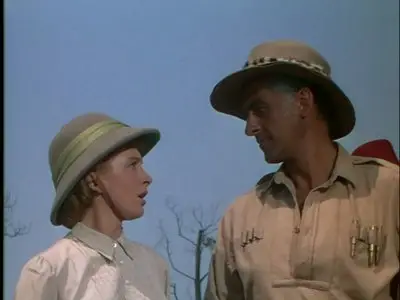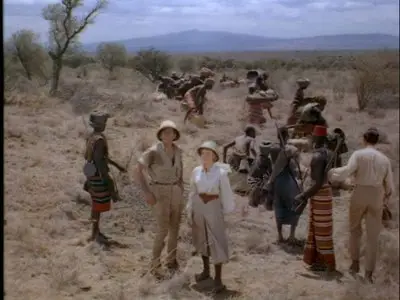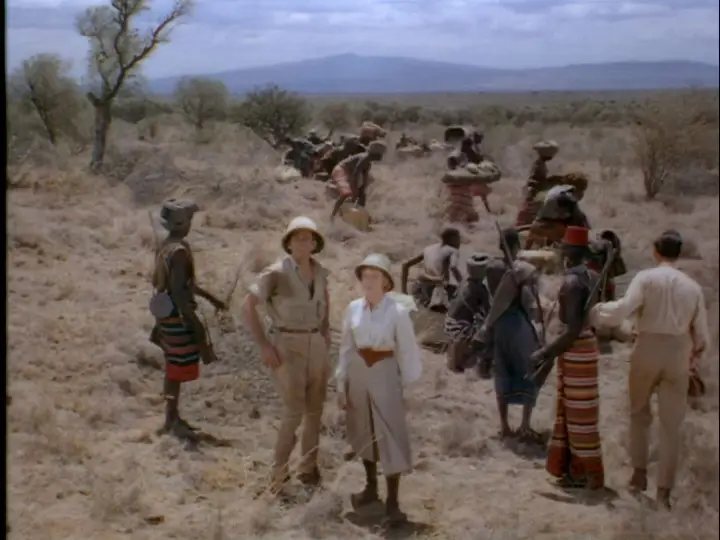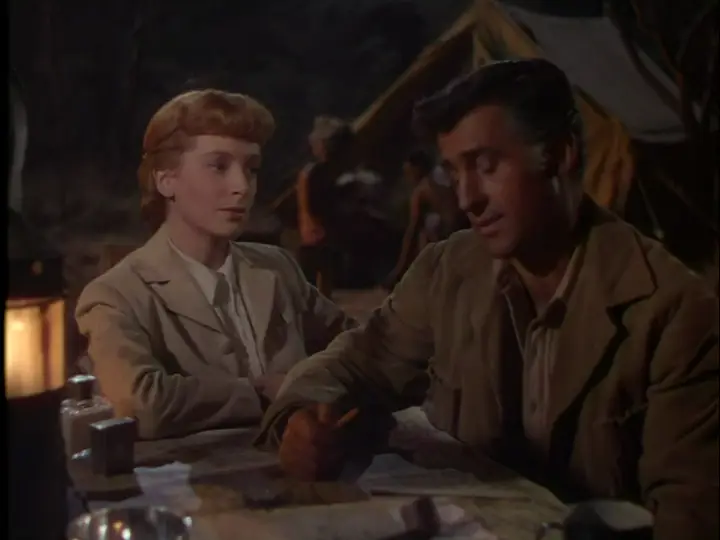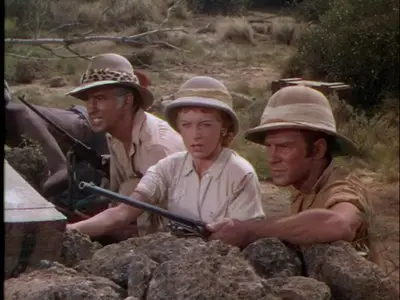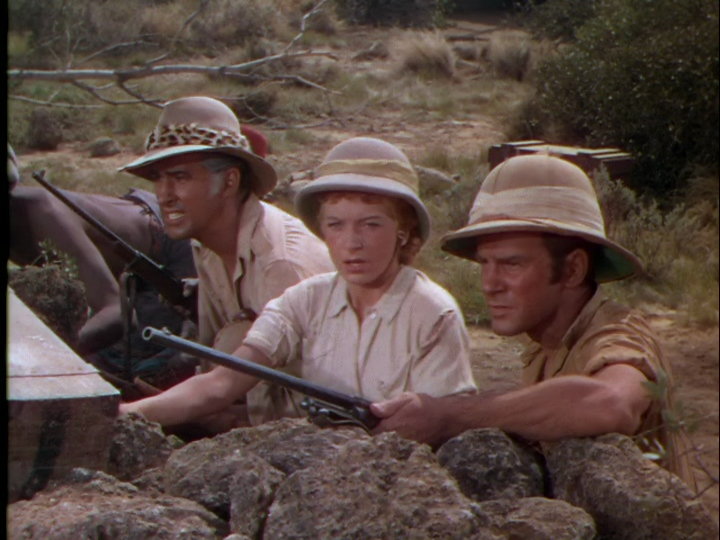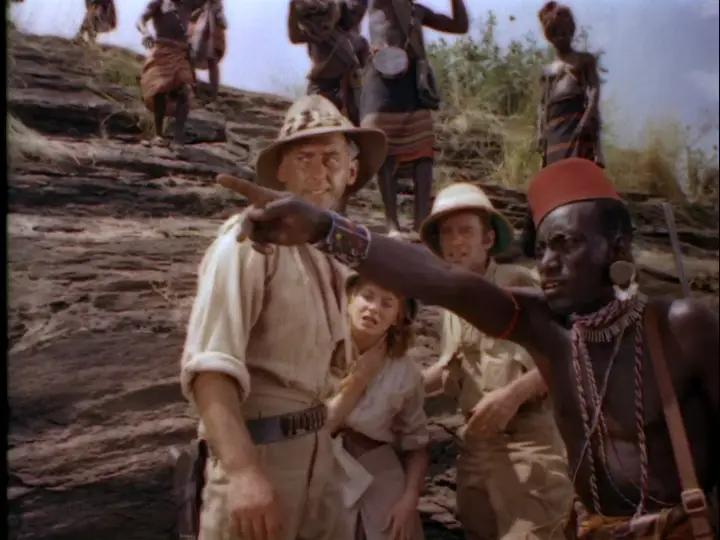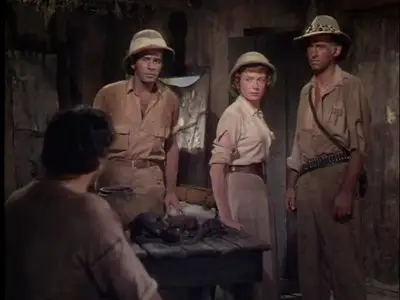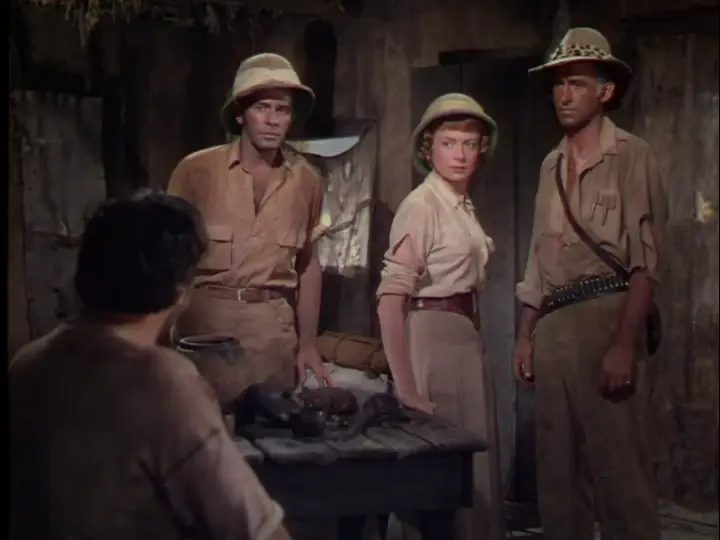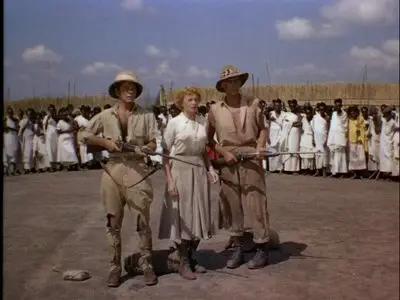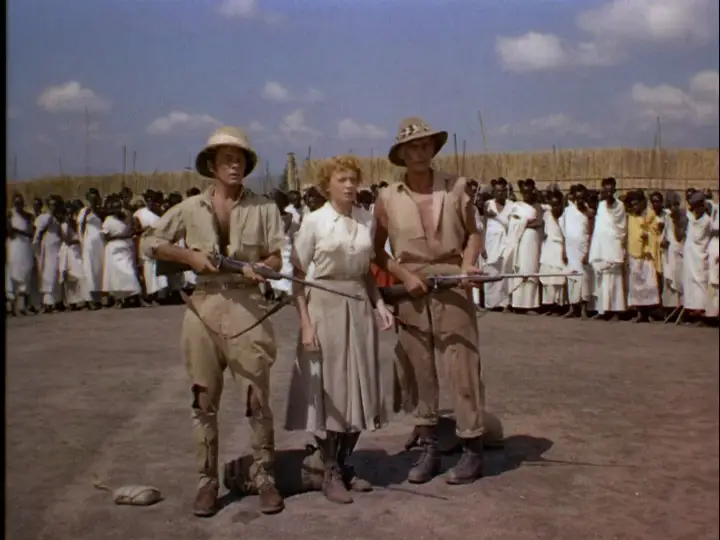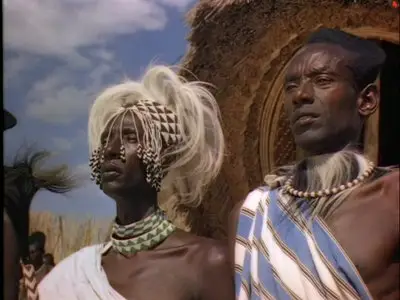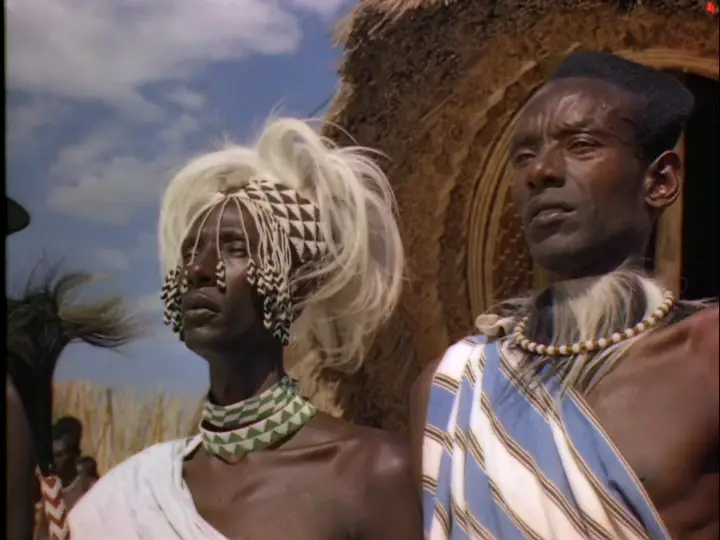King Solomon's Mines (1950)
DVD9 | VIDEO_TS | NTSC 4:3 | Cover + DVD Scan | 01:48:37 | 4,60 Gb
Audio: English, French - AC3 1.0 @ 192 Kbps | Subs: English, French, Spanish
Genre: Adventure, Romance, Action
DVD9 | VIDEO_TS | NTSC 4:3 | Cover + DVD Scan | 01:48:37 | 4,60 Gb
Audio: English, French - AC3 1.0 @ 192 Kbps | Subs: English, French, Spanish
Genre: Adventure, Romance, Action
Guide Allan Quatermain helps a young lady (Beth) find her lost husband somewhere in Africa. It's a spectacular adventure story with romance, because while they fight with wild animals and cannibals, they fall in love. Will they find the lost husband and finish the nice connection?
IMDB
When King Solomon's Mines opened in November 1950, some critics dismissed it as simply a Tarzan-inspired adventure and not much more. But in fact, Sir Henry Rider Haggard's novel King Solomon's Mines had been published in 1885 and even helped spawn the Tarzan stories by Edgar Rice Burroughs - the first of which appeared in 1912. Haggard's tale told of Allan Quartermain, a British hunter in Africa who is persuaded by a British woman and her brother to guide them on a search for her missing husband - who himself was searching for the legendary treasure of King Solomon. Along the way through the stunning landscape, they encounter all sorts of obstacles in the form of exotic wild animals and threatening native warriors.
Quartermain was based on Haggard himself, who spent many years in Africa in the late 19th century as a gentleman hunter-explorer. His novel was a great success in a Western world fascinated with the mysterious "Dark Continent." The earliest known film version is a 1919 South African production, but the more famous early version is British studio Gaumont's 1937 take starring Sir Cedric Hardwicke. In 1950, MGM mounted a lavish Technicolor remake, complete with A-level production values, a huge $3.5 million budget, and a popular British star, Stewart Granger, making his American debut opposite Deborah Kerr. (Errol Flynn had been MGM's first choice, but he opted to make Kim instead.) Much of the budget for King Solomon's Mines went toward the location expenses - Kenya, Uganda, Tanzania, and the Belgian Congo. The result was a thrilling adventure with fantastic footage of landscapes and wildlife including pythons, tigers, rhinos, and crocodiles - not to mention a lengthy, thundering stampede of various animals which is easily the highlight of the picture.
Not unlike The African Queen, which would be made the next year, King Solomon's Mines was a tough and uncomfortable picture to shoot. Filming in Africa was a very rare thing at the time; this was the first Hollywood feature to do so since MGM's Trader Horn (1931), and the logistical requirements were massive. For example, 60,000 pounds of equipment had to be shipped to Mombasa, including seven specially constructed trucks and a snowplow, since some footage was to be shot on 17,000-foot Mt. Kenya. Filmstock was flown from Hollywood to Africa and back in custom-designed, refrigerated cans that kept the film at a constant 50-degree temperature. Re-icing stations were set up along the way in New York, the Azores, Dakar (in Senegal), Leopoldville (in the Belgian Congo), and Johannesburg (in South Africa).
On the set, cast and crew suffered from stifling heat, dysentery, malaria, fever, snakes and tsetse flies. The most bizarre danger, however, came from the indigenous Masai tribal members who were performing in the film. For one sequence, the Masai chiefs lifted the ban on ancient ceremonial dances so the film unit could observe their old war rituals. Five hundred warriors got so wound up chanting, dancing and screaming for two days, that they went berserk and began actually hurling their spears at the westerners. Deborah Kerr scrambled high up a tree for safety. Eventually calmer heads prevailed, but seven spears found their way into the camera case!
King Solomon's Mines carries two directing credits: Compton Bennett and Andrew Marton. According to several accounts, it's fair to say that Bennett began the film, that Marton took over about halfway through, and that the latter is responsible for most of the thrilling action scenes. Co-star Richard Carlson, in an interview years later, matter-of-factly summed up the reason for this: "Compton Bennett was not the right director for an action film. He was a 'drawing-room' director." Stewart Granger agreed. Upon learning from producer Sam Zimbalist that Bennett was directing, he later wrote, "I kept my mouth shut. How could I tell him what I knew, that James Mason and producer Sydney Box had directed The Seventh Veil [1946] and all Bennett had done was to say 'action' and 'cut,' after being given his instructions by those two. Unfortunately for everyone involved, I said nothing."
On the other hand, it was fortunate for everyone involved that the film's 2nd-unit director was the experienced Andrew Marton. After the first couple of weeks' rushes caused concern with studio executives, Marton was entrusted with making sure the wildlife and action scenes were exceptional. Marton did so well that when the crew returned to Hollywood to finish production, he took over the directing reigns completely and officially. He would go on to direct more of his own films but is best remembered today for his further 2nd-unit work on big action films and epics - most famously Ben-Hur (1959), for which he shot the chariot sequence. On King Solomon's Mines, Marton worked so effectively with director of photography Robert Surtees that the cinematographer was rewarded with an Academy Award®. (The movie also won Best Editing and was nominated for Best Picture.) Indeed, while King Solomon's Mines was a solid commercial hit, critics saved their praise solely for the technical aspects: "What makes this a socko piece of escapist entertainment," said Variety, "is the authenticity it gains by being filmed on the actual locale. The camera brings Africa to life in the breathtaking beauty of color. The setting is alive with beauty and menace."
Up to now, Stewart Granger had already achieved success in England, playing romantic leads in a line of melodramas, but this, the actor's first film under his new MGM contract, made him an outright Hollywood star. (Granger took it in stride. "To me, acting is torture," he said.) Deborah Kerr, of course, was another English star who had achieved American stardom and in fact was one of the highest-paid actresses at MGM. Cameraman Surtees said of Kerr, "she acts with her eyes more than anyone else I've worked with." Kerr and Granger created enough romantic sparks here that MGM would pair them again on The Prisoner of Zenda (1952) and Young Bess (1953).
So many miles of film were shot for this production that some footage would be used again in other Africa-set pictures for years to come, starting with Watusi (1959), a cut-rate B-movie imitation produced by Sam Zimbalist's cousin Al. Other "thieves" included Tarzan. the Ape Man (1959), Drums of Africa (1963), Trader Horn (1973 remake) and the disastrous 1985 remake of King Solomon's Mines itself, starring Richard Chamberlain and Sharon Stone. Yet another version of Haggard's famous tale will hit American television as a miniseries in June, 2004, starring Patrick Swayze as Quartermain. It, too, was filmed in Africa.
Special Features: Theatrical trailer
Many Thanks to Original uploader.
If you want to download it, but found out that links are dead,
just leave a comment or PM me!
just leave a comment or PM me!
No More Mirrors.


